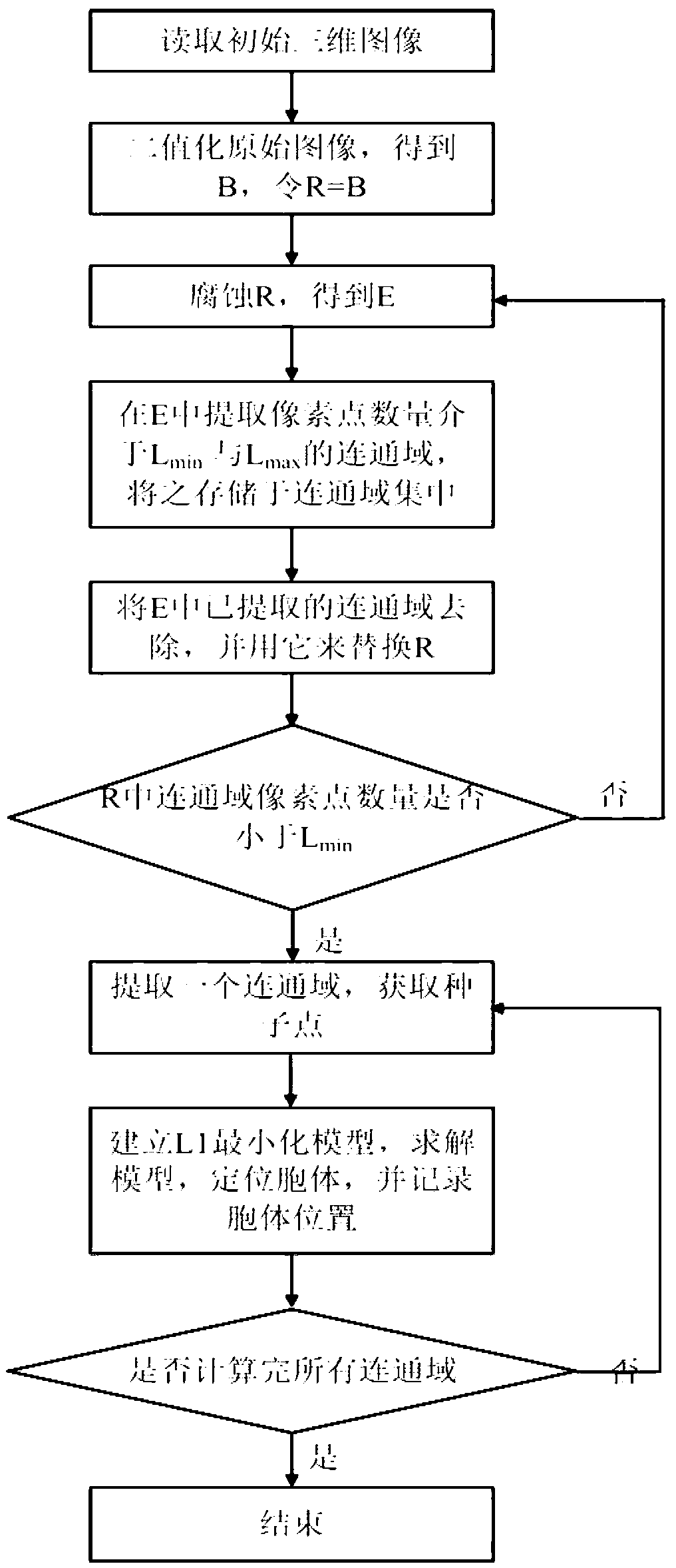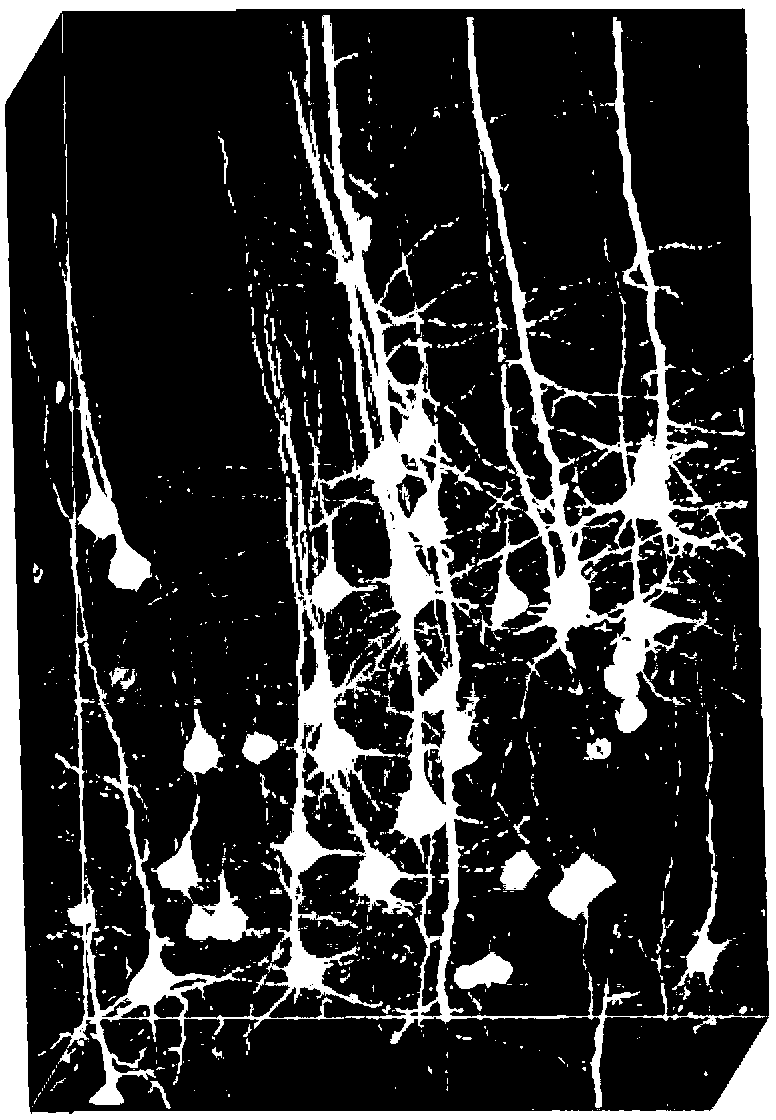Automatic cell localization method based on minimized model L1
A cell positioning and minimization technology, applied in the field of biomedical optical image processing, can solve the problems that neuron cells cannot be processed well and are not mature enough
- Summary
- Abstract
- Description
- Claims
- Application Information
AI Technical Summary
Problems solved by technology
Method used
Image
Examples
example
[0131] Taking mouse brain slice images acquired by super-resolution fluorescence imaging microscope or functional two-photon confocal imaging microscope as the object, the original images are preprocessed to facilitate subsequent operations.
[0132] step 1:
[0133] Read in the 3D original image (such as figure 2 shown), the four (each matt) pixels of each frame of the two-dimensional image of the three-dimensional original image are combined into one pixel, and the signal value of each pixel is directly added to obtain a new image Denoted as I (such as image 3 shown);
[0134] Make a small operation on I and T1 (T1 is preferably 400), and then perform 20 convolution operations with a 9x9x1 mean template, and the new image obtained is called the background image, which is recorded as C (such as Figure 4 shown);
[0135] According to formula I, utilize I and C to obtain binarized image, denote as B (such as Figure 5 shown);
[0136] Step 2:
[0137] According to the...
PUM
 Login to View More
Login to View More Abstract
Description
Claims
Application Information
 Login to View More
Login to View More - R&D
- Intellectual Property
- Life Sciences
- Materials
- Tech Scout
- Unparalleled Data Quality
- Higher Quality Content
- 60% Fewer Hallucinations
Browse by: Latest US Patents, China's latest patents, Technical Efficacy Thesaurus, Application Domain, Technology Topic, Popular Technical Reports.
© 2025 PatSnap. All rights reserved.Legal|Privacy policy|Modern Slavery Act Transparency Statement|Sitemap|About US| Contact US: help@patsnap.com



